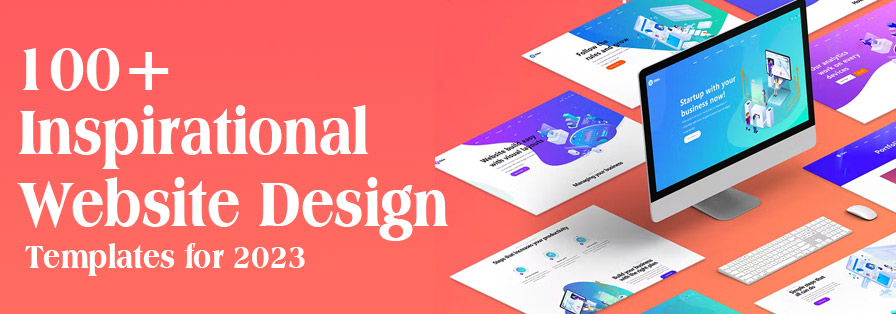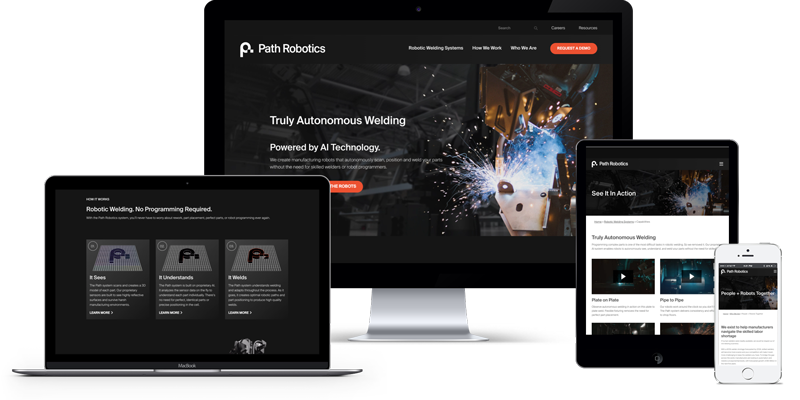Elevate Your Brand Picture with Exceptional Website Design Providers
Wiki Article
Maximize Involvement: Proven Techniques for Outstanding Internet Site Layout
In an increasingly digital landscape, the significance of a user-centric method to site design can not be overstated. Recognizing just how effective navigating, aesthetic pecking order, and content optimization converge to improve customer interaction is essential for any organization looking for to make a significant effect. As we discover various proven strategies that contribute to superior internet site design, the interaction in between these aspects discloses not just best techniques yet also innovative approaches that can raise individual experience. What may amaze you is how basic changes can cause impressive improvements in interaction metrics.Value of User-Centric Style
User-centric style is necessary in creating reliable internet sites, as it focuses on the demands and choices of completion customer from the actual beginning of the design process (website design). This technique makes certain that the web site is tailored to provide an optimal experience for users, helping with involvement and satisfaction. By understanding individual actions, goals, and pain points, developers can produce user interfaces that reverberate with their target audience and promote a sense of connectionApplying user-centric layout includes comprehensive research, consisting of individual identities and trip mapping, which aid in identifying the particular requirements of various individual segments. This data-driven approach permits informed decisions concerning design, web content, and capability, eventually resulting in the development of a much more enticing and intuitive web experience.
Moreover, a user-centric technique promotes ease of access and inclusivity, guaranteeing that websites deal with diverse individual abilities and preferences. This not only boosts user experience yet additionally expands the audience reach. In an affordable digital landscape, focusing on user-centric design is not simply useful; it is necessary for driving interaction, minimizing bounce prices, and cultivating individual commitment. Effective web sites are those that reverberate with customers, making user-centric design an essential principle for successful internet growth.
Reliable Navigating Techniques
A well-structured navigating system is a keystone of efficient website style, developing straight on the concepts of user-centric style. Reliable navigating allows users to locate details rapidly and with ease, improving their overall experience and motivating longer check outs.To achieve this, think about carrying out a clear power structure in your navigation food selection. Key categories need to be right away noticeable, while subcategories can be revealed with dropdowns or expandable menus. This organization helps individuals expect where they may discover appropriate web content, decreasing frustration.

Uniformity is crucial; use acquainted terms and layout elements throughout the site to stay clear of complication. Breadcrumb routes can likewise be advantageous, giving users with contextual understanding of their place within the site and making it possible for simple backtracking.
Finally, guarantee that your navigation is mobile-friendly and receptive. As even more individuals accessibility sites using smart phones, adapting your navigation for smaller sized screens is crucial for keeping usability and availability. By focusing on these approaches, you can produce a seamless navigating experience that keeps customers engaged.
Visual Pecking Order and Layout
Developing a clear visual hierarchy is necessary for assisting users through a web site's content successfully. A well-structured layout not only improves user experience however additionally affects just how site visitors perceive and communicate with information. By purposefully employing dimension, shade, spacing, and contrast, designers can create focal points that accentuate one of the most vital elements, such as headlines, phones call to action, or pictures.Including a grid system can additionally boost aesthetic power structure by supplying a regular structure for content placement. This organization enables users to browse the website with ease, making it simpler to absorb info (website design). In addition, the usage of whitespace is essential; it produces breathing space around components, decreasing cognitive overload and highlighting crucial content

Web Content Optimization Strategies
While producing visually enticing layouts is necessary, the efficiency of a web site ultimately hinges on just how well its material is enhanced for both internet search engine and user interaction. Material optimization involves a tactical technique that boosts presence and relevance, inevitably driving website traffic and maintaining useful link visitors.First, keyword research is basic. Recognizing relevant key words that line up with individual intent enables the integration of these terms naturally right into headings, text, and meta summaries. This not just assists in placing greater on search engines however also enhances the clarity of content for users.

Additionally, maximizing for local search engine optimization can improve involvement for region-specific target markets. Incorporating local keywords and developing content that addresses neighborhood passions enhances significance.
Lastly, on a regular basis updating content makes sure that it continues to be fresh and important, interesting both online search engine and returning users. By concentrating on these material optimization methods, businesses can produce a compelling on-line presence that promotes communication and drives conversions.
this contact form
Receptive and Mobile-First Approaches
User engagement and material presence are increasingly affected by the ability of a website to adapt effortlessly across various devices. With the increase of mobile surfing, using responsive style and mobile-first strategies has come to be important for efficient web advancement. Responsive design ensures that a single web site layout readjusts fluidly to different display dimensions, from desktops to smart devices, thereby offering a constant individual experience.On the other hand, a mobile-first technique prioritizes the mobile user experience throughout the layout procedure. By designing for smaller screens initially, programmers can focus on important features and boost performance, making certain that individuals are not overwhelmed by unnecessary content. This approach additionally enhances filling times, which is critical for maintaining visitors.
Both approaches add to greater look what i found engagement prices, as individuals are most likely to communicate with a website that is visually attractive and user-friendly. Moreover, online search engine favor mobile-optimized websites in rankings, thus improving visibility. In recap, adopting receptive and mobile-first design methods is critical for making the most of user involvement and making sure that content stays available and reliable throughout all gadgets.
Final Thought
Reliable navigating methods, a distinct visual pecking order, and optimization of web content considerably improve user experience. Collectively, these strategies not only facilitate details retrieval yet likewise foster much deeper individual interaction, eventually contributing to greater interaction rates and overall site success.As we explore various tried and tested techniques that add to exceptional web site design, the interplay between these elements exposes not only ideal practices but also cutting-edge methods that can elevate user experience.User-centric design is necessary in creating reliable sites, as it prioritizes the demands and choices of the end user from the actual start of the style procedure. Reliable websites are those that reverberate with users, making user-centric design a fundamental concept for effective web development.
Receptive style makes certain that a solitary site design changes fluidly to various screen sizes, from desktop computers to smartphones, thereby providing a consistent individual experience.
In recap, embracing mobile-first and responsive design methods is vital for optimizing customer engagement and guaranteeing that web content remains easily accessible and effective across all devices.
Report this wiki page